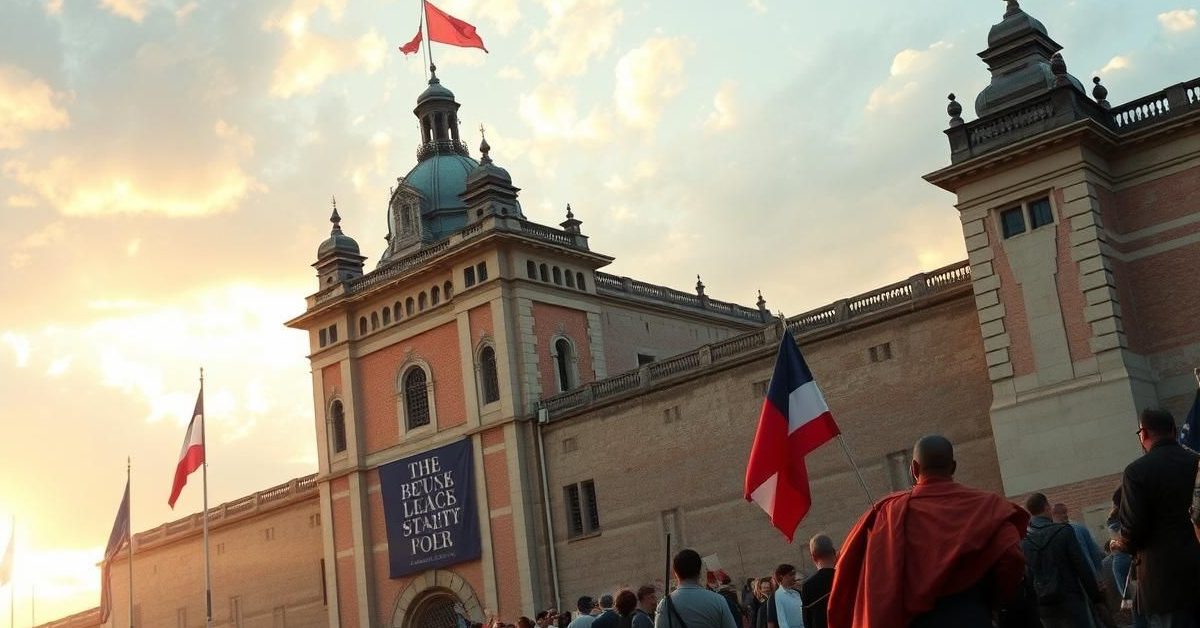The French Revolution, commemorated each Bastille Day, was a seismic event that profoundly reshaped Europe and left an indelible mark on literature, inspiring diverse and often contrasting artistic responses.
The Storming of Bastille and Its Legacy
Bastille Day, celebrated on July 14, marks the 1789 storming of the Bastille prison in Paris. Originally a medieval castle, the Bastille transformed into a notorious prison, symbolizing the monarchy’s oppressive and arbitrary power. Its fall was a pivotal moment, igniting the French Revolution.
Historians have long debated the Revolution’s legacy. While some, like Eric Hobsbawm, emphasized its positive contributions—liberty, equality, and fraternity—others, such as Simon Schama, highlighted the immense violence it unleashed. This stark division in historical interpretation is mirrored in the literary world.
Romantic Poets and Revolutionary Passions
William Blake: A Call to Arms
The Revolution’s early fire found an echo in William Blake, a prophetic voice of the Romantic movement. In his 1791 poem, “The French Revolution,” Blake directly urged the people of France to dismantle the Bastille, seeing it as a symbol of tyranny.
Wordsworth’s Shifting Tides
William Wordsworth initially embraced the revolutionary fervor during his visits to France. His autobiographical poem, “The Prelude,” famously captures this early enthusiasm, describing it as “Bliss… in that dawn to be alive, But to be young was very Heaven!” However, the subsequent Reign of Terror, marked by mass executions, deeply disillusioned him.
Shelley and Byron: Unwavering Rebels
Younger Romantic poets like Percy Bysshe Shelley and Lord Byron, born after the Revolution, fully absorbed its emancipatory ideals. They remained “partisans of revolution to the end,” unlike Wordsworth, whose focus shifted from political uprising to the human condition, an experience that “humanised him,” according to scholar Albert Elmer Hancock.
Novelists Grapple with Upheaval
Jane Austen’s Subtle Reflections
Even Jane Austen, renowned for her tales of romance and family, was aware of the revolutionary cataclysm across the Channel. Though she avoided direct discussions of the events, the anxieties of England’s war with France, a direct consequence of the Revolution, subtly permeate novels like “Mansfield Park” and “Persuasion.” Her responses were woven into the fabric of her narratives.
Dickens’s “A Tale of Two Cities”
Charles Dickens’s “A Tale of Two Cities” offers a vivid and dramatic portrayal of the French Revolution’s chaos. Drawing inspiration from Thomas Carlyle’s historical account, Dickens starkly contrasts a turbulent Paris with a seemingly peaceful London. The novel depicts the brutality of the Reign of Terror, with iconic scenes of storming the Bastille and the relentless guillotine.
The novel’s characters embody different facets of the revolution. From the unjustly imprisoned Doctor Manette to the vengeful Madame Defarge, Dickens explores themes of injustice, class struggle, and redemption. This enduring work even influenced filmmakers like Christopher Nolan.
A Diplomatic Blunder
In 1989, British Prime Minister Margaret Thatcher gifted an original copy of “A Tale of Two Cities” to French President François Mitterrand. This gesture sparked controversy, as Thatcher had recently downplayed the Revolution’s significance for human rights, asserting that earlier British and American documents were more foundational.
Wider Literary Glimpses
The Revolution’s impact extended to other literary giants. Oscar Wilde’s “The Importance of Being Earnest” includes a satirical reference to its excesses, while Leo Tolstoy’s “War and Peace” portrays its profound effect on European aristocracy and politics. Even a critical view of war in “War and Peace” doesn’t stop a character from calling the French Revolution “a splendid thing.”
Later, Baroness Orczy’s “The Scarlet Pimpernel” series presented a different perspective, focusing on an English aristocrat’s efforts to save French nobles from the guillotine, reflecting an advocacy for the old order.
- The storming of the Bastille on July 14, 1789, became a symbol of revolution against tyranny.
- Romantic poets like Blake, Wordsworth, Shelley, and Byron were deeply influenced, showing evolving reactions from initial enthusiasm to disillusionment or enduring revolutionary ideals.
- English novelists, including Jane Austen and Charles Dickens, subtly or explicitly wove the Revolution’s impact into their narratives.
- “A Tale of Two Cities” remains a quintessential literary depiction of the Revolution’s chaos and class conflict.
- The French Revolution’s legacy continues to be debated and reinterpreted in historical and literary works across centuries.
From poetry to novels and plays, the French Revolution remains a rich, complex subject that continues to inspire and challenge writers, reflecting humanity’s ongoing struggle with power, freedom, and societal change.















